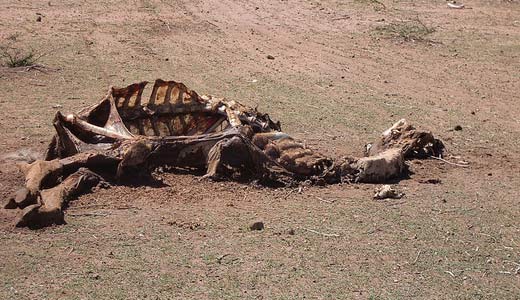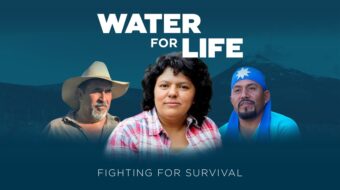
Some people have been worrying that the Mayan calendar foretold the end of the world today, Dec. 21. And many science-fiction books and stories have been written exploring what might happen if the world’s existence was threatened – would people and nations join together to fight the threat, would they give up in despair, would they try to unite but instead devolve into warring factions, would the world revert to pre-industrial times, or to the Dark Ages?
We no longer have to look to fiction for the answers. Climate change is just such a crisis – worldwide in scope, a threat to fundamental aspects of human life like water availability, agricultural yields, the billions of people who live near oceans, and burning fossil fuel to create the energy that drives modern life.
On the positive side, there are many efforts to address the crisis, from United Nations negotiations and reports to 350.org demonstrations, from individual efforts to make personal changes to public campaigns to prevent the building of new coal-fired electricity plants, from cities working to meet the goals of the Kyoto Accords even when their countries can’t agree to ratify it to massive national investments in clean energy like the Recovery Act’s $90 billion down payment on energy transformation, to increasing fuel standards for new cars.
But you don’t have to look very far to find credible doomsday predictions based on the ever more detailed and dire scientific studies and reports.
The latest United Nations Environmental Program report warns that the permafrost across much of the far north, from Alaska and Russia to Canada to the Scandinavian countries, is beginning to melt, and may pose a very alarming threat. There are millions of tons of frozen greenhouse gases stored in the permafrost, and as melting occurs, those gases are released. This threatens to be a crucial tipping point in the fight against global warming, since it could start a cascade of greenhouse gases being released, warming the atmosphere, causing more permafrost melting, releasing even more greenhouse gases. Some earlier predictions of the effects of climate change did not include and calculations of emissions from melted permafrost, since few studies had been done. But now, as evidence accumulates, we are poised near the start of a runaway train to climate disaster.
The report notes that current projections of climate change predict warming of 5.4 degrees to 9 degrees Fahrenheit by the end of the century – calamitous on its own. But those predictions have not completely factored in greenhouse gas emissions from thawing permafrost – which could drive the temperature much higher.
Bill McKibben, environmental author and founder of 350.org, wrote a letter to the UN Doha Climate Change Summit, saying in part:
2012 saw the shocking melt of the Arctic, leading our greatest climatologist to declare a ‘planetary emergency,’ and it saw weather patterns wreck harvests around the world, raising food prices by 40% and causing family emergencies in poor households throughout the world.
That’s what happens with 0.8ºC of global warming. If we are going to stop this situation from getting worse, an array of institutions have explained this year precisely what we need to do: leave most of the carbon we know about in the ground and stop looking for more.
If we want a 50-50 chance of staying below 2 degrees, we have to leave 2/3 of the known reserves of coal and oil and gas underground; if we want an 80% chance, we have to leave 80% of those reserves untouched. That’s not “environmentalist math” or some radical interpretation – that’s from the report of the International Energy Agency last month.
The latest on carbon dioxide accumulations in the atmosphere shows them continuing to go up. We are already long past the safe point of 350 ppm (parts per million, the standard measure); it now stands at over 390 ppm, and is still rising.
It is a dystopian nightmare that is headed our way: massive droughts, floods, rising seas, ocean acidification, decreasing agricultural yields, rising food prices, more climate refugees, more extreme weather such as Hurricane Sandy, more extreme forest fires, melting permafrost not only releasing carbon dioxide and methane but also destroying houses, roads and other infrastructure, and more.
If we don’t want this nightmare sci-fi scenario, the world needs to take drastic action now. If serious action had been taken when the first major scientific warnings were issued (the famous congressional testimony of Dr. James Hansen from NASA’s Goddard Institute was in 1988; the first major international discussion was at the Rio Environmental Summit in 1992), then we might have gotten by with less drastic action, but that time has passed.
Photo: ILRI // CC 2.0











